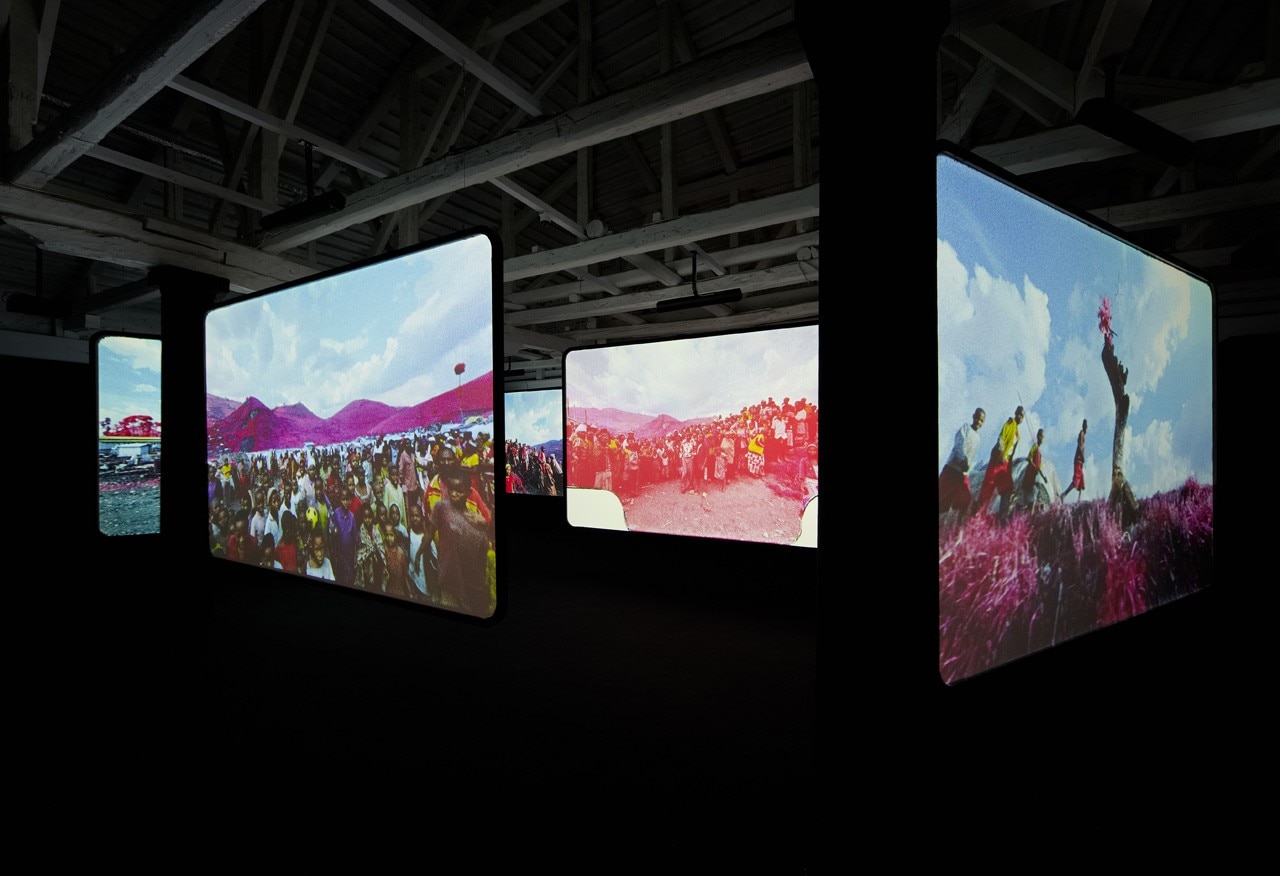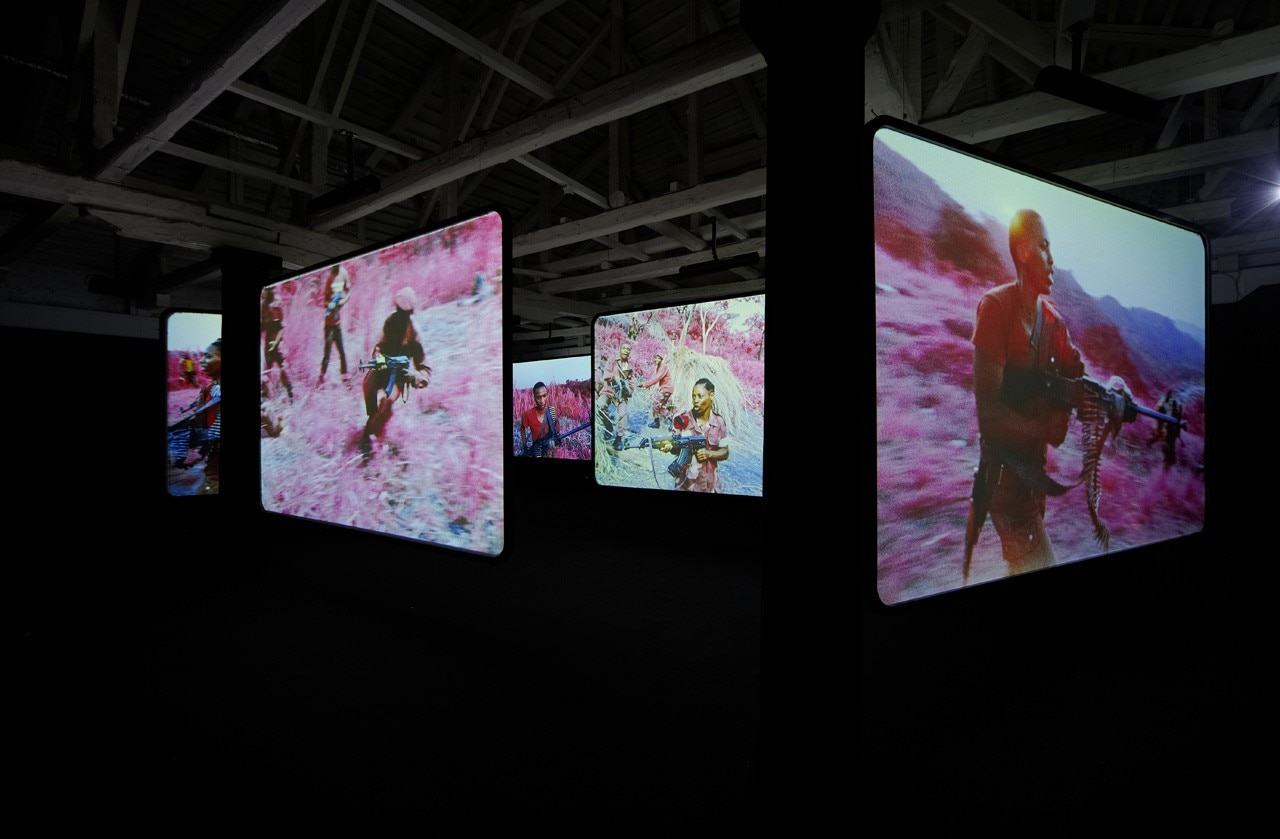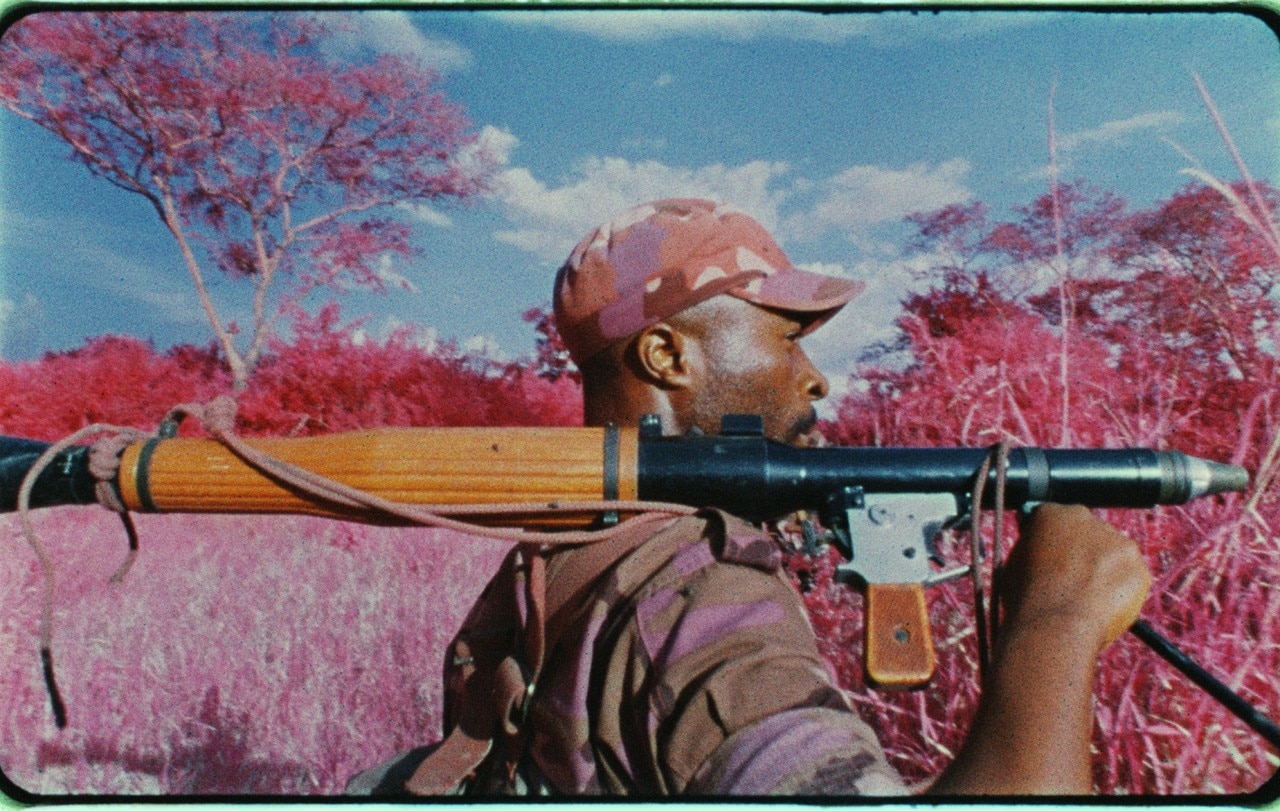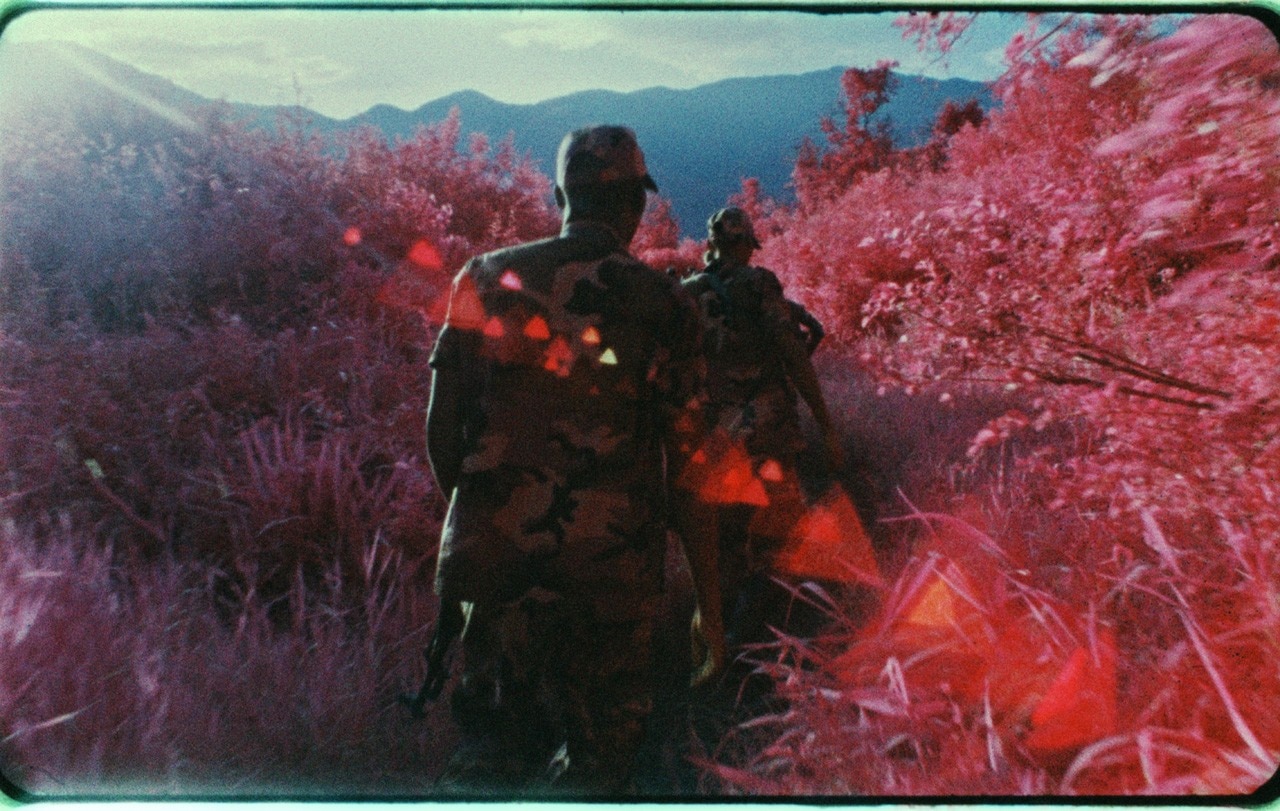
The Enclave is composed of six screens, set up in a room in a way that is anything but random. Placed in crooked, off-centre and asymmetric positions they make up a performative landscape, heightened by the machismo the human presence (that includes child guerrillas holding weapons) and by the cynicism of the observer before the camera.
What attracts about this sequence of moving images is the constant presence of a palette of colours based around bright pink that seems to substitute all of the green in the surroundings, the camouflage of the soldiers, the trees, the bushes and the savanna landscape in the background.
An unreal tint, generated by a filming technique that records the invisible infra-red light spectrum and clashes with the gloomy sense of foreboding evoked by the setting. What is more, the same technique was used up until ten years ago on the frontline to drive out soldiers camouflaged in the landscape.
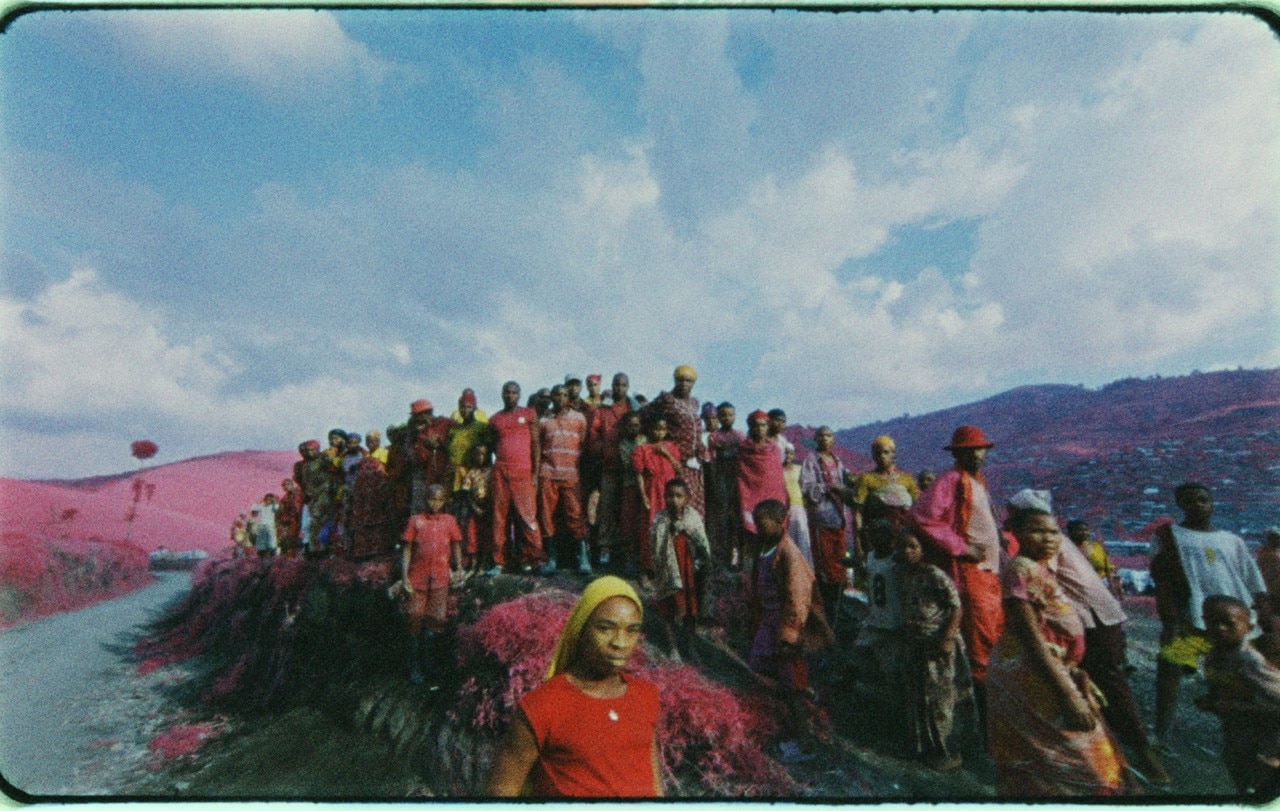
How do you transform human tragedy into beauty? This is the question that subtends this vision of compulsive evocations, with the action passing from screen to screen, leaving one to take it up again in the next scene.
From the oceanic sea one passes to the terrestrial jungle, filled with crowds on the edge of crumbling paths, that look into the camera with spectral gazes; from the refugee camps to a single wooden house, uprooted like a trophy by barefoot men with the impetuousness of a wild animal, who is probably already there just a few steps behind them.
When you're not looking, you listen to see. Alongside the film images, sound ones explode. Alongside the apparently live recordings, a preponderant sound is the deaf echo that follows the shots of the guerrillas that depending on how it is used, attenuates or emphasises the degree of fiction of the work.
